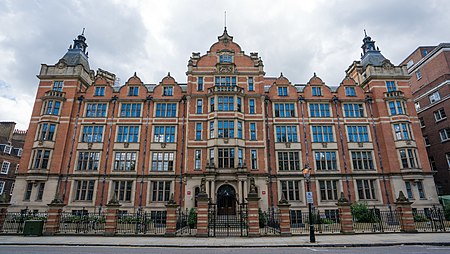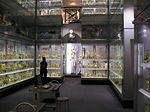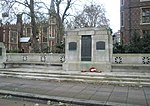32 Lincoln's Inn Fields

32 Lincoln's Inn Fields (formerly Her Majesty's Land Registry Building) is an Edwardian Grade II listed building on the on the National Heritage List for England, and an academic facility of the London School of Economics and Political Science (LSE), located on the south side of Lincoln's Inn Fields in Central London. The building was built in two stages between 1903 and 1913 to house the Head Office of HM Land Registry, with the west wing and centre of the building were built between 1903 and 1905, and the east wing was completed in 1912–1913. The Land Registrar Charles Brickdale based the design of the building on Blickling Hall in Norfolk. The designs were executed by the Office of Works under Henry Tanner and the supervising architect was Richard Allison.The London School of Economics acquired the building in 2010 and converted it into an academic facility, through a £56 million investment. The interior was transformed by the architectural firm Jestico + Whites to include classrooms, two Harvard style lecture theatres, a cafeteria, break out spaces, and a new accessible entrance. The building was opened again in January of 2013, and now houses its Department of Economics and the International Growth Centre.The building was the exterior set for the Halcyon Hotel in the 2017 World War II television drama The Halcyon.
Excerpt from the Wikipedia article 32 Lincoln's Inn Fields (License: CC BY-SA 3.0, Authors, Images).32 Lincoln's Inn Fields
Lincoln's Inn Fields, London Holborn (London Borough of Camden)
Geographical coordinates (GPS) Address Nearby Places Show on map
Geographical coordinates (GPS)
| Latitude | Longitude |
|---|---|
| N 51.51556 ° | E -0.11486 ° |
Address
32 Lincoln's Inn
Lincoln's Inn Fields 32
WC2A 3PH London, Holborn (London Borough of Camden)
England, United Kingdom
Open on Google Maps






